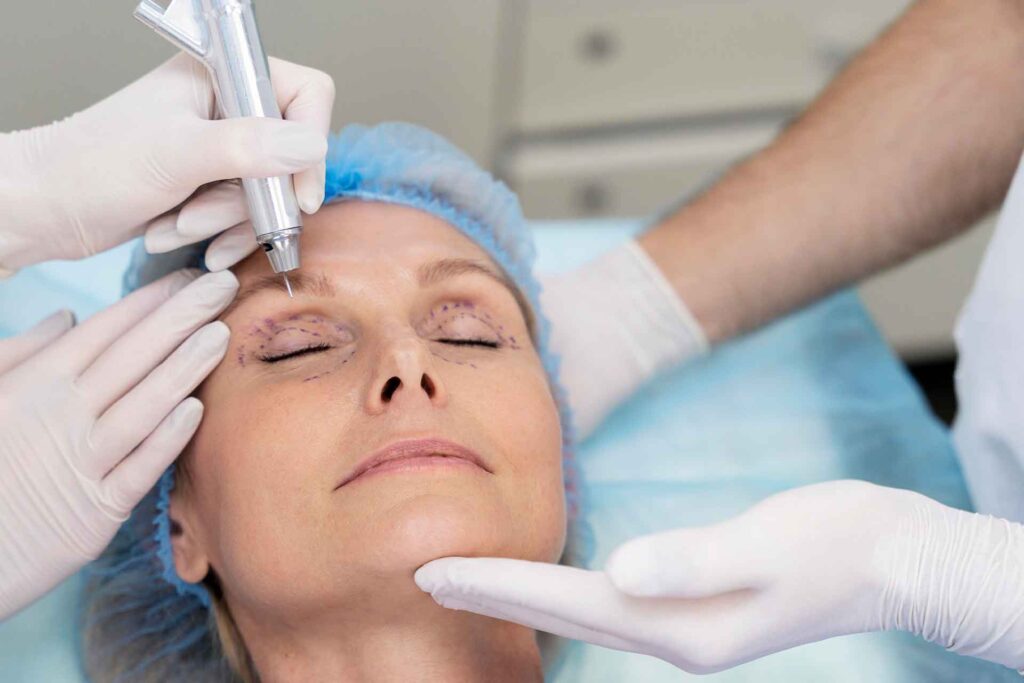
#PROCEDURE
BLEPHAROPLASTY(EYELID) SURGERY IN TURKEY
The eyes are commonly referred to as the window to the soul, they are one of the most important aspects of facial expression. The trendiest eye shape is the classic almond shape with longer, curved eyelashes with tapered eyebrows.
Eyelid surgery or blepharoplasty is a surgical procedure to improve the appearance of the eyelids. Having beautiful, bright eyes makes all the difference to a face. Having an upper eyelid crease is one way to achieve this and look younger. In general, many Asians have no or partial eyelid creases. It often happens that the fat inside the eyelid (orbital fat) makes the crease less visible, reducing the brightness of the eyes.
MAKE YOUR APPOINTMENT WITH OUR SPECIALIST
You can get a free hair analysis in under 3 minutes with our online assistant.
GET YOUR DOCTOR REPORT
Start your transformation today!
Submit your info for a FREE CONSULTATION!

TYPES OF BLEPHAROPLASTY
1.1 Double eyelid surgery by the open technique: The surgeon makes an incision in the crease of the eyelid, removes fat and excess skin and renders the desired aesthetics before sewing to create a new crease of the eyelid
1.2 Double eyelid surgery: by suture technique: The surgeon marks 6 stitches on the new eyelid crease then inserts the suture (thread) in and out of the muscle and passes it through the marked stitches of the skin of the eyelid anterior to posterior skin. Finally the suture is embedded under the skin to fix the double eyelids
3.1 Transconjunctival lower eyelid surgery. This procedure is suitable for someone who has eye bags but skin and tissue that still has good elasticity. The surgeon will remove the excess fat through the incision in the conjunctiva and then close the incision with dissolvable stitches. The eyes will look entirely natural without any visible scar as in picture 1
3.2 Transcutaneous lower eyelid surgery. This procedure is used for those with sagging skin, bags or wrinkles who have less elasticity of the lower eyelid. The incision is made just below the lower eyelash, excess fat is removed, the muscle is fixated, excess skin is removed and sutures (stitches) are made.
5.1 Lateral Canthoplasty. This is a cosmetic surgery to create a change in the horizontal dimension of the eye. It can enlarge the outer edge of the eye by around 2-3 mm. It can be performed alongside a double eyelid surgery. Epicanthoplasty makes the eye significantly larger and brighter.
5.2 Canthopexy (Cat eyes) This is a minor surgical procedure that strengthens and stabilizes the lateral canthal tendon to tighten a drooping lower eyelid or ectropion. This method repositions the outside corner of the eye where the eyelids meet, restoring a youthful look. It can uplift the eye around 5 mm.
5.3 Lowering Canthoplasty: In some East Asian people the Lateral Canthus is too high and can look unnatural. Lower Canthoplasty can move the Canthus downward around 3-5 mm. Incisions are made in the upper and lower eyelids. The Canthal ligament is repositioned and then adjusted to balance and shape the eye.
